Taiwan is a crowded country. The average home is small. Farmers tend fields which, by North American standards, are tiny.
At the same time, the pace of life is fast. Rushing from A to B, it’s easy to miss some of Taiwan’s smaller attractions. None of the three manmade curiosities described in this article justifies going hours out of your way, but if you’re passing nearby, you won’t regret stopping to take a look at any of them.
SHALU’S NOSTALGIC PAINTINGS
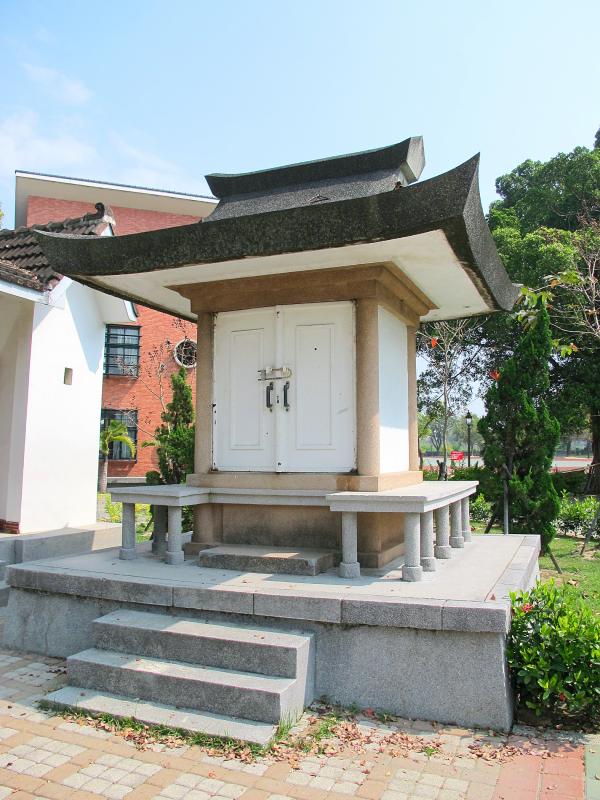
Photo: Steven Crook
Shalu’s Nostalgic Paintings (沙鹿懷舊彩繪), also known as Meiren Borough Painted Village (美仁里彩繪村), is a set of colorful artworks depicting Taiwan as it was a half century ago.
Images in Shalu District (沙鹿), an old neighborhood approximately 17km northwest of downtown Taichung, celebrate iconic Taiwanese brands like Uni-President’s (統一) Minced Pork Flavor Instant Noodles and HeySong’s (黑松) soft drinks. There are also two-dimensional recreations of a traditional fruit stand and a shop selling ladies’ fashions.
These nicely-executed backdrops, not to mention the lifelike cats that had been painted on walls, proved so appealing to Instagrammers in 2018 and 2019 that many residents grew heartily sick of the crowds and the litter they left behind. Since then, property-owners have covered up some of the murals. If you do visit, you mightn’t see everything you were expecting to.
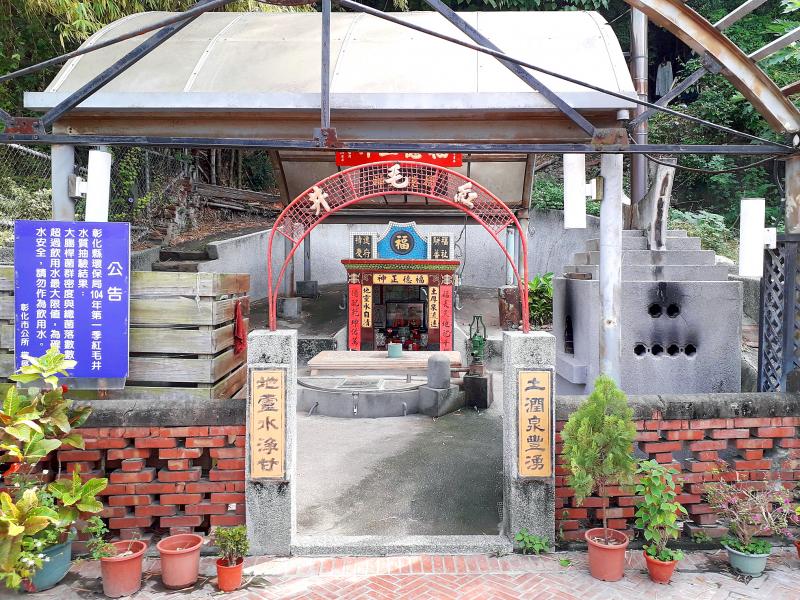
Photo: Steven Crook
Even though this attraction isn’t as popular as it used to be, visiting on a weekday is still preferable. The fewer the people, the better the photos you’ll get.
The walking distance from Shalu TRA Railway Station is less than 500m. At Kuang Tien General Hospital (光田綜合醫院), you’ll need to cross Shatian Road (沙田), which every morning is the venue for a busy traditional market.
The Nostalgic Paintings are on Sinping Lane (新平巷), which runs east-west between Shatian Road and Siping Street (四平).
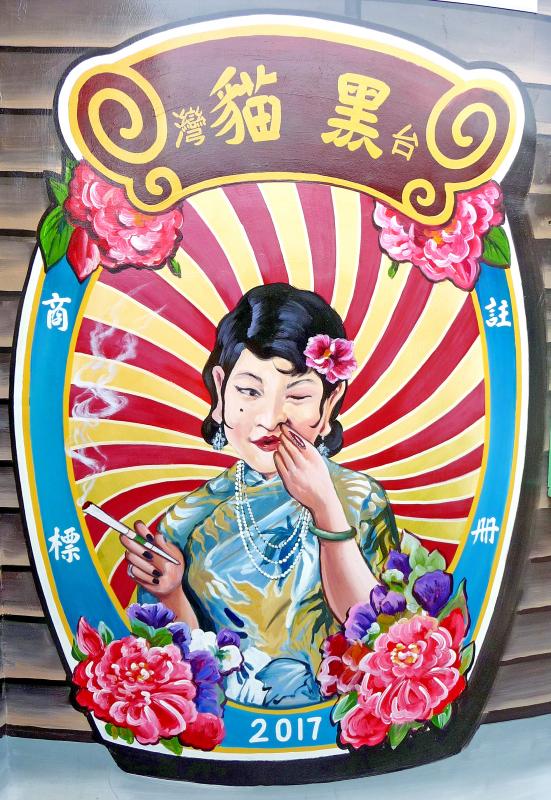
Photo: Steven Crook
If you plan to go sightseeing in the western part of Taichung, you’ll find bus #93 (one service every 20 to 30 minutes) especially useful. It connects Taichung HSR Station with the temple town of Tachia (大甲) via Shalu, then makes a stop 500m from the historic 99-year-old railway station at Rihnan (日南) where it’s possible to board a local train.
CHANGHUA’S RED-HAIR WELL
Almost every tourist who explores Changhua City spends time at the Confucius Temple (孔子廟) or visits Mount Bagua (八卦山) to take photos of the iconic Great Buddha statue. Between these two landmarks, there’s an often-overlooked oddity.
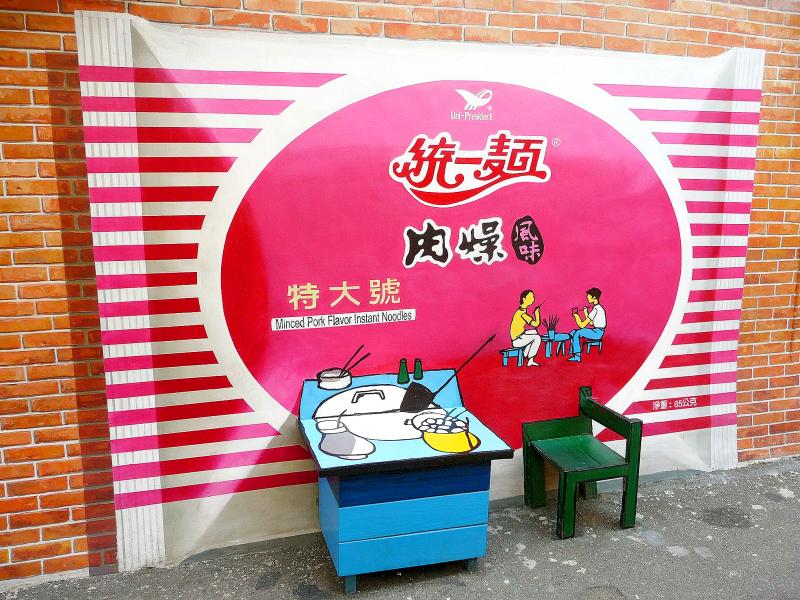
Photo: Steven Crook
The Dutch Well (紅毛井) is at the foot of the hill, just east of Jhongshan Road Section 2 (中山路二段). If you’re looking toward Mount Bagua, the well is at the end of a short path between an off-white colonial-era building — nowadays Changhua Arts Hall (彰化藝術館, closed Mondays; free admission) — and a huge tomb.
The grave, which is off limits to the public, holds the remains of Koo Hsien-jung’s (辜顯榮, 1866-1937) mother. Koo is remembered for building a fortune during the period of Japanese rule, and establishing a business dynasty that still thrives.
The well is said to have been dug in the 17th century by employees of the Dutch East India Company — hence its Chinese name, which translates as “red-hair well.” Until quite recently, many Taiwanese casually referred to Europeans as “red hairs.”
Behind the well, there’s a shrine dedicated to the Land God. The well itself has a locked cover, to stop pets and infants falling in, but it’s possible to draw water from the pump next to it. I’ve seen people washing clothes here, and filling buckets so they can wash their cars.
Whatever you do with the water, don’t drink it. According to a local government notice, on the left as you face the shrine, in 2015 dangerous levels of E.coli bacteria were detected in samples taken from the well.
Walking from Changhua TRA Railway Station to the well via the Confucius Temple takes 20 to 25 minutes.
SINHUA ELEMENTARY SCHOOL — ‘HOANDEN’
Taiwan was a Japanese colony for 50 years until the end of World War II, and the colonial authorities tried hard to inculcate loyalty to Japan among the population.
As part of the indoctrination campaign, every school campus on the island included a small windowless structure known as a hoanden. Each one housed a photographic portrait of the reigning emperor, as well as a copy of the Imperial Rescript on Education.
The Rescript, published in 1890, is a short text that urges subjects to be filial to their parents, affectionate to their siblings, in harmony with their spouses and true to their friends. In addition to being modest and benevolent, they should, “pursue learning and cultivate arts, and thereby develop intellectual faculties and perfect moral powers; furthermore, advance public good and promote common interests.”
Moreover, it was imperative that one put the good of the nation before their own interests: “Should an emergency arise, offer yourselves courageously to the State.”
Almost all of Taiwan’s hoanden were demolished or repurposed after 1945. What’s now called Sinhua Elementary School Hoanden (新化國小奉安殿) is one of just three that still stand.
This intriguing little structure can be found on Minsheng Road (民生路) in Tainan’s Sinhua District (新化).
The shape of its roof, and the steps leading up to the platform, hint that this little structure had a quasi-religious function.
On the emperor’s birthday and four other important dates each year, the hoanden was unlocked so the rescript could be ritually removed by a senior teacher or an official wearing white gloves. It was then read aloud; students and teachers were required to demonstrate due reverence by looking downward while listening.
The somber exterior is mostly gray, because reinforced concrete was the principal material used when the hoanden was built in 1931.
Back then, public buildings were usually wood, and therefore at risk of burning down. The use of concrete thus ensured the safety of the portraits and the rescript in the event of a fire or an earthquake.
Finding somewhere to park a car near the hoanden is fairly easy. Every half hour, a Green Line bus from Tainan to Yujing (玉井) goes through Sinhua; get off at Sinhua Bus Station or Sinhua District Office (新化區公所).
Steven Crook has been writing about travel, culture and business in Taiwan since 1996. He is the author of Taiwan: The Bradt Travel Guide and co-author of A Culinary History of Taipei: Beyond Pork and Ponlai.

Last week Joseph Nye, the well-known China scholar, wrote on the Australian Strategic Policy Institute’s website about how war over Taiwan might be averted. He noted that years ago he was on a team that met with then-president Chen Shui-bian (陳水扁), “whose previous ‘unofficial’ visit to the US had caused a crisis in which China fired missiles into the sea and the US deployed carriers off the coast of Taiwan.” Yes, that’s right, mighty Chen caused that crisis all by himself. Neither the US nor the People’s Republic of China (PRC) exercised any agency. Nye then nostalgically invoked the comical specter
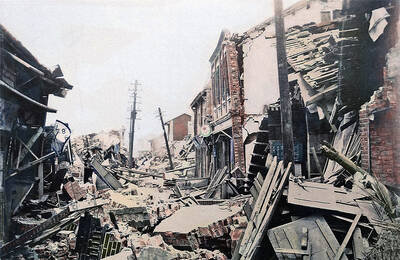
April 15 to April 21 Yang Kui (楊逵) was horrified as he drove past trucks, oxcarts and trolleys loaded with coffins on his way to Tuntzechiao (屯子腳), which he heard had been completely destroyed. The friend he came to check on was safe, but most residents were suffering in the town hit the hardest by the 7.1-magnitude Hsinchu-Taichung Earthquake on April 21, 1935. It remains the deadliest in Taiwan’s recorded history, claiming around 3,300 lives and injuring nearly 12,000. The disaster completely flattened roughly 18,000 houses and damaged countless more. The social activist and

Over the course of former President Ma Ying-jeou’s (馬英九) 11-day trip to China that included a meeting with Chinese Communist Party (CCP) leader Xi Jinping (習近平) a surprising number of people commented that the former president was now “irrelevant.” Upon reflection, it became apparent that these comments were coming from pro-Taiwan, pan-green supporters and they were expressing what they hoped was the case, rather than the reality. Ma’s ideology is so pro-China (read: deep blue) and controversial that many in his own Chinese Nationalist Party (KMT) hope he retires quickly, or at least refrains from speaking on some subjects. Regardless

Approaching her mid-30s, Xiong Yidan reckons that most of her friends are on to their second or even third babies. But Xiong has more than a dozen. There is Lucky, the street dog from Bangkok who jumped into a taxi with her and never left. There is Sophie and Ben, sibling geese, who honk from morning to night. Boop and Pan, both goats, are romantically involved. Dumpling the hedgehog enjoys a belly rub from time to time. The list goes on. Xiong nurtures her brood from her 8,000 square meter farm in Chiang Dao, a mountainous district in northern Thailand’s